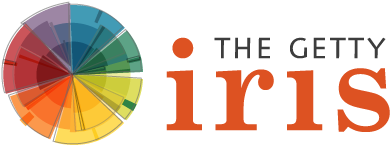The Color of Art Pigment Database: The Color of Art Pigment Database is a valuable reference for all artists working with color, and it is the the most complete pigment resource with color index names available for free. This collection of pigment information is an indispensable resource for all artists and art conservators interested in art restoration or making permanent works of art. Whether an artist uses oil paints, watercolor or acyclic, knowing the pigments and their properties is essential for all the visual arts from oil painting, watercolors or acrylics, to printing, and indeed, any craft or art that uses color. Artists interested in making paint in the studio should find this information useful too.
FORS (Fiber Optics Reflectance Spectra) of Pictorial Materials (Italy): This database presents a collection of reflectance spectra in the 270-820 nm, 350-1000 nm, and 980-1700 nm ranges acquired on several paint layer structures that were built with materials selected from those most commonly used both in the past and in the present day. The pictorial materials were painted out onto small wood panels prepared with a traditional ground of gypsum and animal glue. They were applied as pure pigment/dye or as a mixture of different pigments/dyes with different binding media. Some of these pictorial materials were also applied as transparent glazes over opaque paint layers or metal leaf.
Forbes Pigment Database (Museum of Fine Arts, Boston): The Forbes’ Pigment Collection contains over 3000 colorants assembled by the late Edward Waldo Forbes, former Director of the Fogg Art Museum at Harvard University (1909-1945). Currently, the core collection of pigments is housed in the Straus Center for Conservation at Harvard University while Forbes’ private collection of pigments resides at the Institute for Fine Arts Conservation Center at New York University.
Pigments Checker (Cultural Heritage Science Open Source): A collection of pigments important in art history. Among all the pigments and their varieties ever used in art, this collection selects the most used from antiquity to early 1950’. Pigments Checker is a standard tool designed for Art professionals, scientists, students and conservators to evaluate and practice non-invasive techniques for pigments identification. The actual Checker costs money but the website features useful information and timelines.
The Alchemy of Paint by
Call Number: Avery Fine Arts ND1260 B85ISBN: 9780714531724Publication Date: 2009The Alchemy of Paint is a critique of the modern world, which Spike Bucklow sees as the product of seventeenth-century ideas about science. In modern times, we have divorced color from its origins, using it for commercial advantage. Spike Bucklow shows us how in medieval times, color had mystical significance far beyond the enjoyment of shade and hue.Artists' Pigments C. 1600-1835 by
Call Number: Avery Fine Arts ND1260 H2211ISBN: 1873132913Publication Date: 2007R.D. Harley's book applies itself to a detailed and comprehensive examination of the primary documentary sources of this crucial period, providing an invaluable complement to the work of analytical scientists concerned with the identification of pigments.The Art of All Colours by
Call Number: Avery Fine Arts ND1260 C544ISBN: 1873132727Publication Date: 2007Catalogue of manuscript spources for the materials and methods of painting before 1500.Chromatography, or, A treatise on colours and pigments, and of their powers in painting, &c. by
Call Number: E-bookPublication Date: 1835Colors by
Call Number: Avery LC TP897 .D3913 2000ISBN: 9780810928725Publication Date: 2000This volume examines colour, from the painted caves at Lascaux (dating back some 40,000 years) to the computerized chemistry of today. It traces the lengthy history of dyes and pigments.I buoni colori di una volta : ricettario fotografico per conoscere e fabbricare pigmenti, leganti, vernici e materiali artistici antichi, direttamente dai trattati medievali by
Call Number: Avery FIne Arts Offsite ND1510 .D56 2010ISBN: 9781234567897Publication Date: 2010 I pigmenti nell'arte : dalla preistoria alla rivoluzione industriale
by
Call Number: Avery Fine Arts Offsite TP936 .T255 2010ISBN: 9788863360905Publication Date: 2010
I pigmenti nell'arte : dalla preistoria alla rivoluzione industriale
by
Call Number: Avery Fine Arts Offsite TP936 .T255 2010ISBN: 9788863360905Publication Date: 2010Les traditions techniques de la peinture médiévale by
Call Number: Avery Fine Arts ND1260 L933ISBN: 2854970527Publication Date: 1996Materials and Techniques of Medieval Painting by
Call Number: Butler Offsite ND1500 .T5 1956ISBN: 0486203271Publication Date: 1956Sums up 20th-century knowledge: paints, binders, metals, surface preparation. Based on manuscripts and scientific investigation.Natural Colorants for Dyeing and Lake Pigments by
Call Number: Avery LC TT854.3 .K57 2014gISBN: 9781909492158Publication Date: 2014This simple handbook aims to enable readers to make their own lake pigments or dye their own textiles using dyes from naturally occurring raw materials in a simple way under relatively controlled conditions and using recipes optimised for easy use in the laboratory or indeed the classroom. The book provides the basic principles of dying and lake pigment making (using the term lake pigment in its original, historical, sense indicating a naturally occurring dye precipitated onto a conventional usually white substrate, frequently a form of hydrated alumina) and from these the reader can try modifying the conditions or the amount of raw material, for example, to obtain different results.Pigment Compendium: a dictionary and optical microscopy of historical pigments by
Call Number: Avery Fine Arts ND1260 P6171ISBN: 9780750689809Publication Date: 2008It provides the first definitive manual dedicated to optical microscopy of historical pigments. Illustrated throughout with full colour images reproduced to the highest possible quality, this book is based on years of painstaking research into the visual and optical properties of pigments. Now combined with the Pigment Dictionary, the most thorough reference to pigment names and synonyms available, the Pigment Compendium is a major addition to the study and understanding of historic pigments.


